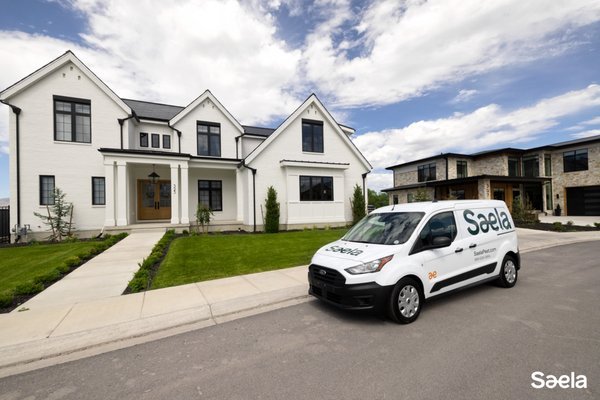A sturdy, durable, and aesthetically pleasing roof is an integral part of any home. It offers protection from weather elements, contributes to the overall architectural design, and impacts your property’s value. However, roof replacement or renovation projects can come with hefty price tags. Proper planning and budgeting become essential to ensure that you can afford to undertake these projects without financial strain. The challenge, though, lies in the lack of transparency in pricing structures and the varying costs of materials and labor across the roofing industry. This article will guide you on how to plan and budget for your new roof.
Understanding the Components of Roofing Costs
Before diving into the actual budgeting process, you have to understand the different components that contribute to roofing costs. Primarily, the expense of getting a new roof comes typically from the costs of materials, labor, and permits or licenses. Material costs, which form the most significant portion, depend on the type and quality of materials you choose. Asphalt shingles, for example, can be cheaper than metal or tile roofs.
A part of understanding these costs is having a tool that can help you anticipate the price variations depending on these dynamics. For this, a roofing calculator cost can be a vital tool. A roofing calculator allows you to input different parameters and see how
they affect the final price, allowing you to plan better. You should use these online resources so that you can get a better idea of what the type of roof you want will cost you.
Labor costs, on the other hand, focus on the payment for the skilled workforce that will install the new roof. These costs can vary depending on your geographic location, the complexity of the job, and the company you hire. It’s important to note that labor-intensive tasks can seriously add to the total roofing costs. Lastly, permits or license fees might also be necessary depending on your local laws and regulations. These costs, though often overlooked, can also add to the total budget.
Defining Your Roofing Needs
After understanding the cost components, you should define what you want in your new roof. It involves deciding on factors such as the type of roofing material, style, color, and additional features like gutter systems or skylights. Your choice affects the total costs, availability of materials, and installation timeframe. For example, choosing a common material like asphalt shingles might lower the costs vis-a-vis a rare, high-end material like slate.
However, the latter might have a longer lifespan, leading to lower long-term costs. Thus, defining your roofing needs calls for a delicate balance between budget, preference, and long-term value. Also, you should consider the durability and maintenance requirements of your chosen materials. Investing in a durable, low-maintenance roof might initially seem costly, but it can potentially save you from frequent roof repairs and replacements in the future. To get the most out of your roof, you may also need to update your insulation and bolster your home’s ventilation.
Researching Market Prices

Now that you understand your roofing needs and the components of roofing costs, it’s time to get an idea of the market prices. Browse the internet, visit local stores, or consult contractors to gather pricing information for materials and installation services in your area. Try to get as much detailed information as you can to get a comprehensive understanding of the ongoing rates. Keep in mind that prices may vary widely, and the lowest price isn’t always the best option.
Contractors who offer substantially lower prices might be cutting corners, using substandard materials, or lacking proper licensing and insurance. Evaluating the reputation and reliability of prospective contractors, along with their pricing, is a perfect practice. Remember that your research’s goal is not to choose the cheapest option, but to ensure that you’re getting good value for your money from a trusted roofing company. Consider aspects like warranty, durability, aesthetics, and the contractor’s level of expertise and experience.
Seeking Multiple Quotes
After preparing a rough estimate based on your research, it’s time to seek multiple professional quotations. This step allows you to make a more precise comparison and negotiate prices. When comparing different quotes, make sure to take into account all the factors, including workmanship, materials, and timeline. Maintain open communication with prospective contractors to understand their price determinants better.
If possible, ask the contractors to itemize their quotes to know precisely what you’re paying for. Roofing is a major investment, and the decision shouldn’t solely revolve around the cost. When choosing a contractor, consider their work history, reputation, customer feedback, warranty offerings, and even the tools they use during projects. Assess whether they’re worth the value they’re asking for.
Planning for Unexpected Costs
Roofing projects, like any other home renovation tasks, are prone to unexpected costs. It’s always advisable to have an extra budget allocation to cater to unforeseen expenses that might come up during the project. It can be anything from replacing damaged sheathing, repairing structural elements to overhauling an old roofing system. Unexpected costs can also result from poor initial estimates.
An inexperienced contractor might underestimate the amount of materials needed, leading to additional purchases midway through the project. Such circumstances underscore the importance of hiring a reliable, experienced roofing contractor. Planning for such eventualities prepares you financially and mentally to navigate any obstacles during your project. Although these unexpected situations can be disconcerting, having a contingency plan in place can ensure that your project runs smoothly.
Setting Up Your Budget
Once you’ve gathered all the information, it’s time to set up your budget. Compile all the data you’ve collected – from your roofing needs, market prices, professional quotations, and contingency plans – and formulate an articulate, detailed budget. A well-structured budget will provide a clear overview of your financial commitments, allow you to manage your resources, and track your expenditure effectively throughout the project. Whenever planning for home maintenance, budgeting is a priority.
When setting up your budget, consider all cost aspects, including materials, labor, permits, and extra costs like disposal and clean-up fees. It’s also a good idea to factor in cost increases for materials or labor that could occur over the course of your project.
Building a buffer into your budget for unexpected costs is a wise move. Like any renovation project, unforeseen problems can arise during a roofing project that necessitates additional costs. Having savings set aside for these events will help you avoid financial stress and potential project delays.
Financing a New Roof
Having a budget is one thing, but securing financing is another vital part of the process. Depending on the cost of your new roof, you may need to consider various financing options. They can range from traditional loans, home equity lines of credit, financing from roofing companies, or even leveraging your savings. Understand what financing method would be suitable for your situation. Research the interest rates, repayment terms, and implications on your long-term financial health for each option, and pick one that’s most beneficial for you.
As this article demonstrates, budgeting for a new roof involves understanding the components of the roofing costs, defining your roofing needs, researching market prices, getting professional quotes, setting up contingency plans, preparing a budget, and securing financing. The process can be complex and time-consuming, but it’s crucial to ensuring the success of your project. While this guide can give you a good start, the importance of adapting these guidelines to fit your specific circumstances is paramount. Tailoring the process to your needs ensures that you get a roof that serves and satisfies your preferences, needs, and long-term value propositions.



